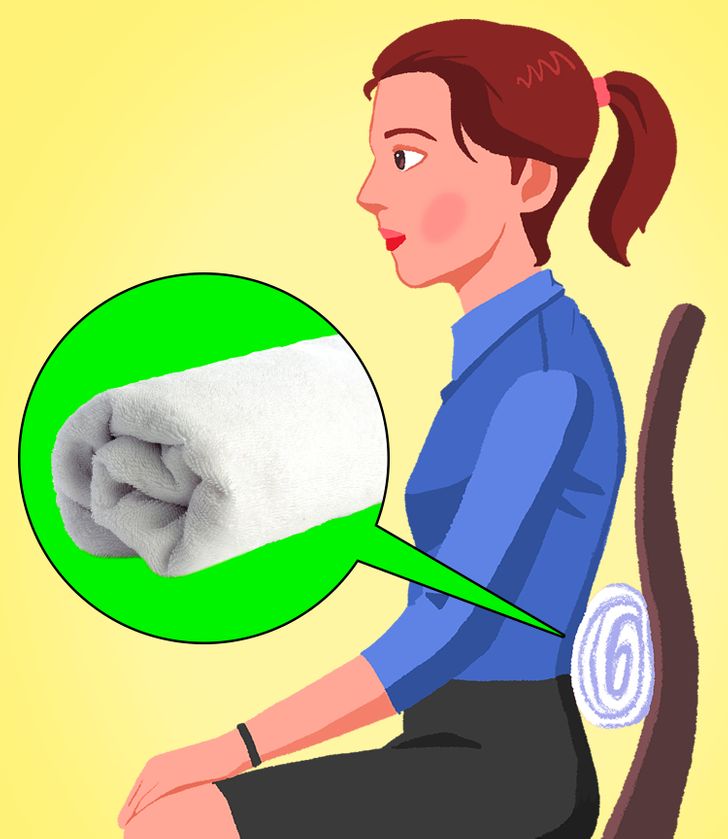totally agree with the point about the chair. A good office chair is a must!
7 Ways to Maintain Good Posture When You Sit for a Long Time
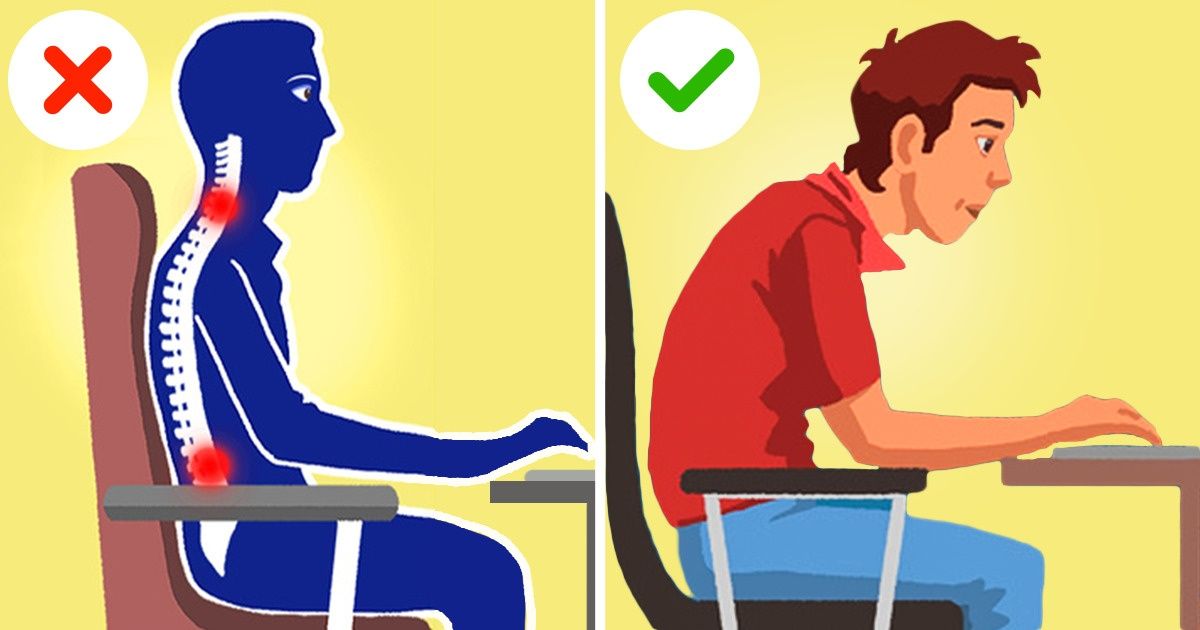
We are living at a time where we spend most of our days slumped in chairs — whether we’re working, studying, or relaxing. Perhaps some of you are already feeling the long-term effects of this sedentary position, like muscle stiffness or back pain. Sitting takes a toll on our health, and we need to balance it out by paying attention to the correct posture.
We at Bright Side are all for a comfortable and healthy life, so we’ve listed a few tips that could help you improve your posture. Please keep in mind that this article is for informational purposes only. For medical advice, please consult your doctor.
1. Make sure that your chair is the right fit for you.
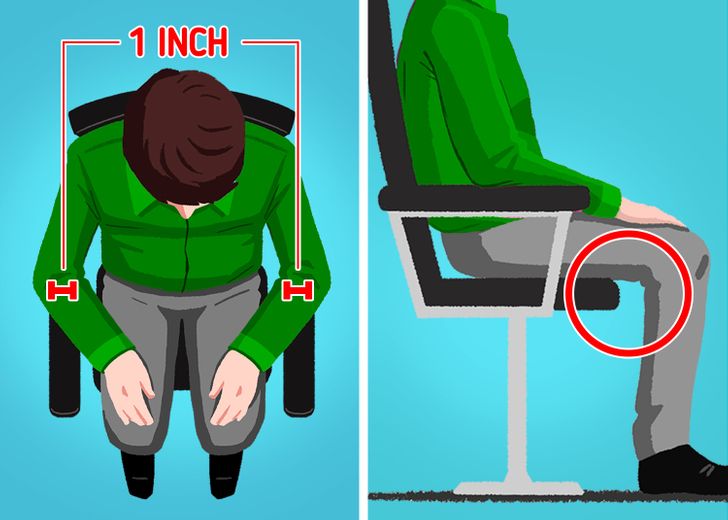
Chairs don’t fall into the category of “One Size Fits All.” Like shoes, we need to make sure that they are the perfect fit for our own measurements, because they can make a difference in our health and comfort. The best option is to go for adjustable ones, so you can change the height of the chair or the angle of the backrest recline, depending on your needs.
There are also 2 main points to remember when choosing an ergonomic chair. The first one is to check and see if the seat pan is at least one inch wider than your hips on each side so that you will have enough thigh support. Secondly, check to see if there is at least a 0.5-inch gap between the edge of the seat and the back of your knees. A soft cushion will also help prevent compression of the thighs and buttocks.
2. Check the chair’s lumbar support, and if it doesn’t have one, create your own.
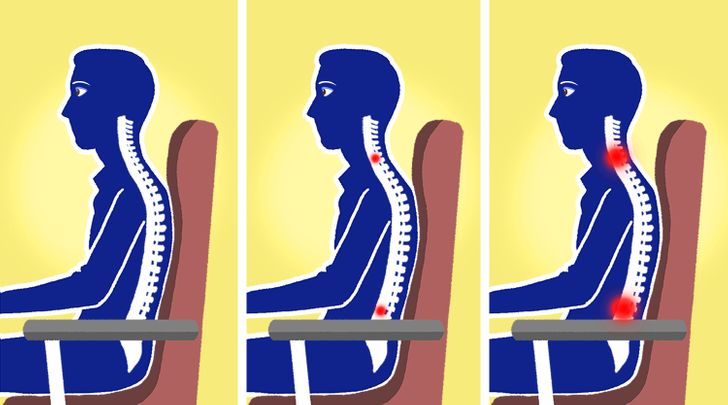
A posture-friendly chair should have good back support, which means it is contoured in a way that traces our spines’ natural, S-shaped curve. Seats that do not support the lumbar region or lower back may cause a damaging and flattening effect on the spine.
However, chairs with back support features may be expensive and impractical for companies with lots of workers. A cheaper alternative is to use a rolled-up towel or a small pillow as a cushion for your back. But please be mindful of the proper size, as a larger towel may put your spine into an awkward position and cause more discomfort.
3. Follow these simple steps to achieve the correct sitting posture.
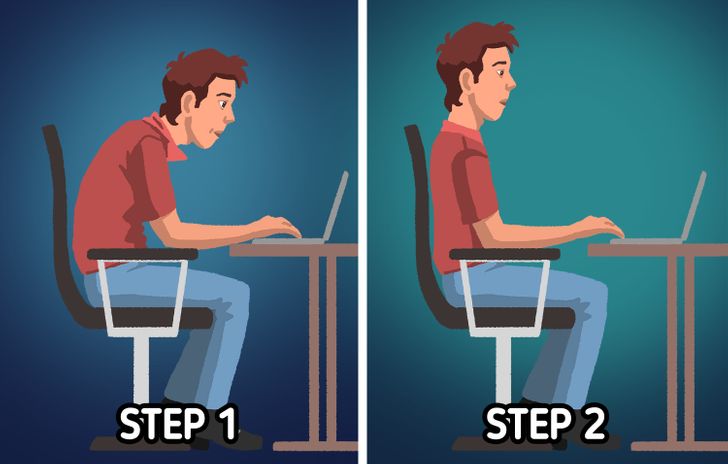
Now that you’ve figured out the chair, the next thing to consider is how to properly sit on it. You can start by sitting at the end of the chair and going into a full slouch, with the neck and shoulders rolled forward.
Then slowly straighten your spine by pulling your head and shoulders up, and pushing your lower back forward. Hold this pose for several seconds before releasing it slightly, then scoot back until you reach the backrest.
4. Keep your feet flat on the floor.
Crossed legs can reduce blood flow and may cause muscle pain, so experts advise keeping the feet straight and firmly planted on the ground. They also suggest considering removing heels while you’re sitting and using a footrest if your soles can’t reach the floor.
5. Be conscious of your sitting angles.
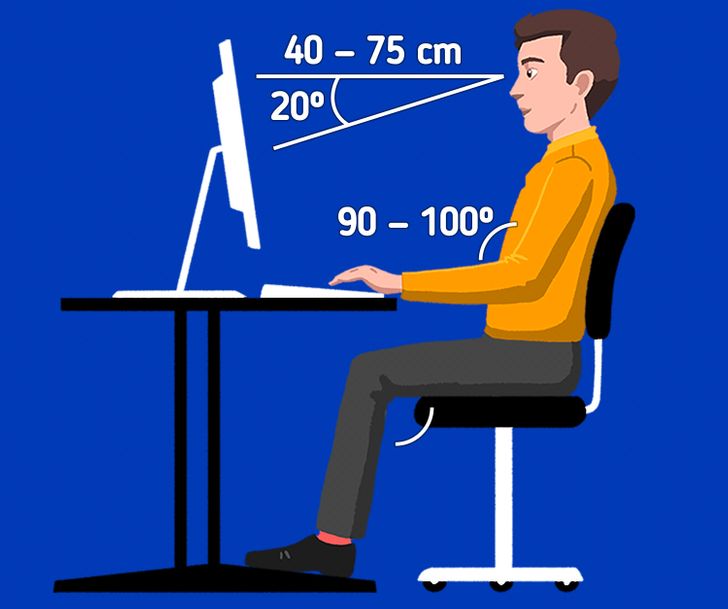
Elbows and knees are ideally bent at 90° angles, while the hips can go slightly beyond a right angle to accommodate the back recline. The computer screen should be adjusted at eye level height to avoid straining the neck and the eyes. Keyboards should also be placed about 4 to 6 inches from the edge of the table so that the wrists and the hands have some space to rest on.
6. Avoid muscle fatigue by giving yourself an excuse to stand every now and then.
Even if you found the most ergonomic chair out there, excessive sitting can still lead to health problems and muscle injuries. To avoid that, try to get your blood flowing by standing and moving around. If possible, take at least one-minute breaks every 30 minutes. You can also set an alarm or a timer to remind you that you need to step away from your chair for a bit.
7. Do the “wall slide” and other exercises that could help balance out your posture.
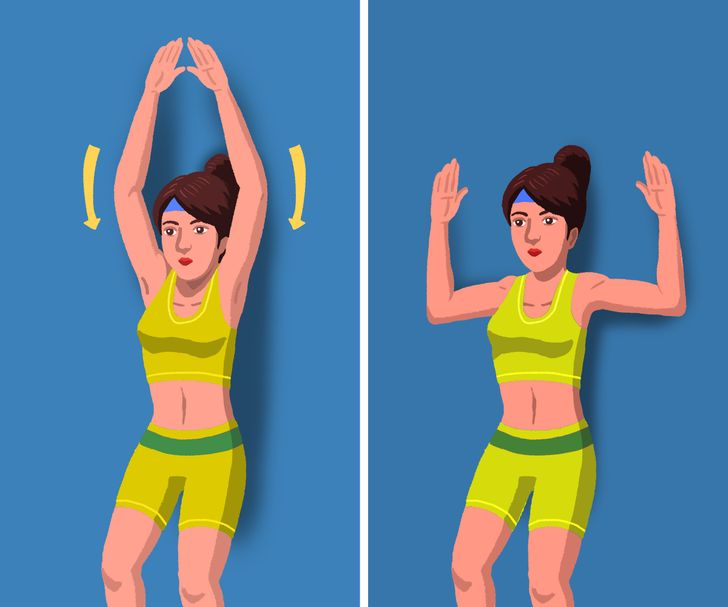
The “wall slide” is a simple exercise that resets your body, and relieves tightness in the neck and shoulders. The first step is to stand with your back against the wall, and with your knees slightly bent and arms extended over your head.
Keep the back of your hands, elbows, shoulders, and spine pressed against the wall as you slide your arms downward, just until you dip below shoulder level. Then lift your arms back up and repeat this pattern 10-12 times.
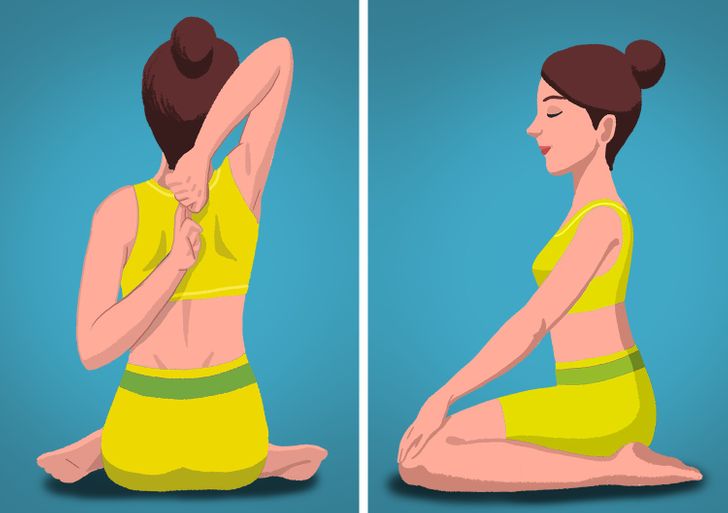
There are also some yoga poses, like the “Gomukhasana” or Cow Face Pose, that relieve muscle tightness. This involves bending the arms backward and having the hands meet each other at the back. There’s also “Virasana,” where you sit on your heels while keeping your chest and torso straight. This pose helps you adapt to a better posture when you go back to sitting.
How many hours a day do you spend sitting? Are there other tips about good sitting postures that you would like to share?
Bright Side has its own podcasts now. Take cool articles with you and listen to new stories whenever and wherever you want.
Comments
Related Reads
10 Dads Who Carry Their Families With Quiet Kindness

15 Stories That Show Kindness Is the Quiet Power the World Often Forgets

My DIL Excluded Me From Gender Reveal Party, Saying I’m "Not Family"—Big Mistake

I Refuse to Be My Sister’s Free Full-Time Nanny—I Don’t Like Kids, and I’m Proudly Child-Free

11 True Stories That Prove Real Life Doesn’t Need a Screenplay

I Refuse to Let the Former Owner Get Married in My Backyard—My Kindness Stops Here

I Refused to Share My Inheritance, Now My Own Kids Are Turning Against Me

I Refuse to Let My Husband Bring His Mom’s Cooking Into My House

16 First Dates So Bad, They Should Be Turned Into a Comedy Movie

I Refuse to Stop Using My Pool Just to Please My Neighbor — Our House, Our Rules

My Mom Ignored Me for Years, Then Suddenly Begged Me for Help

10 Real Life Stories Where Quiet Kindness Spoke the Loudest

